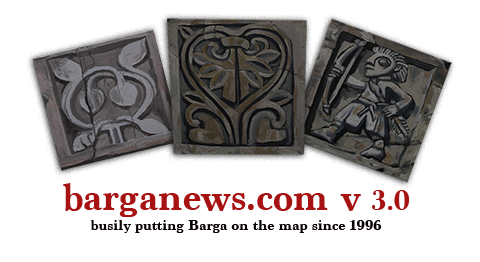Since the first half of the 14th century, Barga Castle has represented the oldest most northerly outpost of the Florentine. This close relationship with Florence is widely seen by the strong influence that the city exerted on Barghigiano buildings.
In addition to a direct drive through which the “capital” promoted public construction sites in the mid 16th century, it was met with considerable interest by private individuals who went ahead with building their own homes following the tastes that had matured in Florence beginning with the 15th century experiences of Leon Battista Alberti.
This is how the most important Barga families acquired homes that recall the prestigious Florentine palaces in terms of the organisation of their interiors and the layout of the external facades.
Modernisation of the town walls got underway in 1526 and the building work of the first buildings of clear Florentine inspiration began halfway through the century.
Palazzo Balduini was the first, so loyal to the Mannerist modules to make you think that architects from Florence were directly involved, characterised by kneeling windows similar to those in the Florentine Palazzo Grifoni, designed by Ammannati.
Palazzo Pancrazi is also remarkable (now home to the town council), which features elements of the Garfagnana tradition, such as the diamond-shaped ashlar around the doors and windows, also found at Castelnuovo Garfagnana, Diecimo and Pescaglia, as well as typical motifs of Florentine buildings.
Palazzo Angeli bears the coat-of-arms of the Angeli family and the Medici, sign of the family’s obedience to its rulers.
The combination of the types of the town’s buildings with a medieval town’s road network makes these buildings one of a kind. They have the prestige of having imported a building model from beyond its walls, amalgamating this with a new proposal of the themes of the rustic architecture of the Serchio Valley in an elegant style.
Dalla prima metà del XIV secolo il castello di Barga rappresentava il più antico avamposto settentrionale dello stato fi orentino. Tale stretto rapporto con Firenze è ampiamente testimoniato dalla forte infl uenza che quest’ultima esercitò sull’edilizia barghigiana.
Accanto ad un impulso diretto attraverso il quale la “capitale” si fece promotrice di pubblici cantieri, alla metà del XVI secolo, si riscontra un forte interesse da parte dei privati che provvedettero alla costruzione delle proprie dimore seguendo il gusto maturato a Firenze a partire dalle esperienze quattrocentesche di Leon Battista Alberti.
Così le più importanti famiglie di Barga si dotarono di un’abitazione che richiamava, nell’organizzazione degli spazi interni come nella disposizione delle facciate esterne, i prestigiosi palazzi fiorentini.
A partire dal 1526 era cominciata l’opera di ammodernamento delle mura cittadine e alla metà del secolo iniziarono i lavori dei primi palazzi di chiara ispirazione fiorentina.
Primo fu il Palazzo Balduini, fedele ai moduli manieristi tanto da far pensare a un diretto intervento di architetti da Firenze, caratterizzato da “finestre inginocchiate” simili a quelle del fi orentino Palazzo Grifoni, realizzato dall’Ammannati.
Notevole è poi il Palazzo Pancrazi (oggi sede dell’Amministrazione Comunale), che presenta, accanto a motivi tipici dell’edilizia
fi orentina, elementi della tradizione della Garfagnana, come il bugnato a “punta di diamante” intorno a porte e finestre, riscontrabile anche a Castelnuovo Garfagnana, Diecimo e Pescaglia.
Il palazzo Angeli riporta lo stemma gentilizio della famiglia Angeli e l’arme dei Medici segno dell’obbedienza della famiglia ai dominatori.
La combinazione di tipologie edilizie cittadine con la trama viaria di un borgo medievale rende unici nel loro genere questi palazzi, che hanno il pregio di importare uno modello edilizio dall’esterno amalgamandolo con una riproposizione in chiave “elegante” dei temi dell’architettura rustica della Valle del Serchio.

